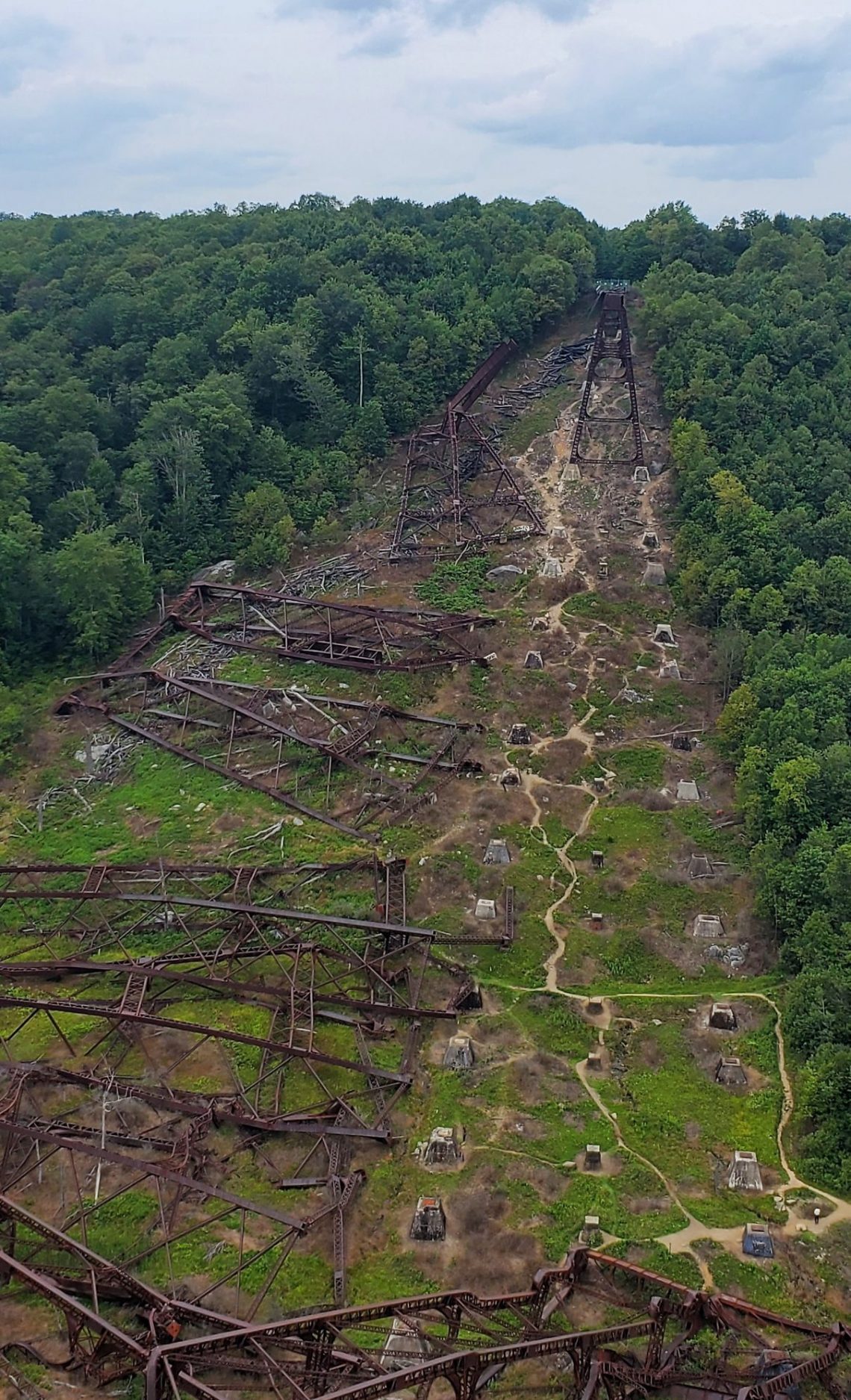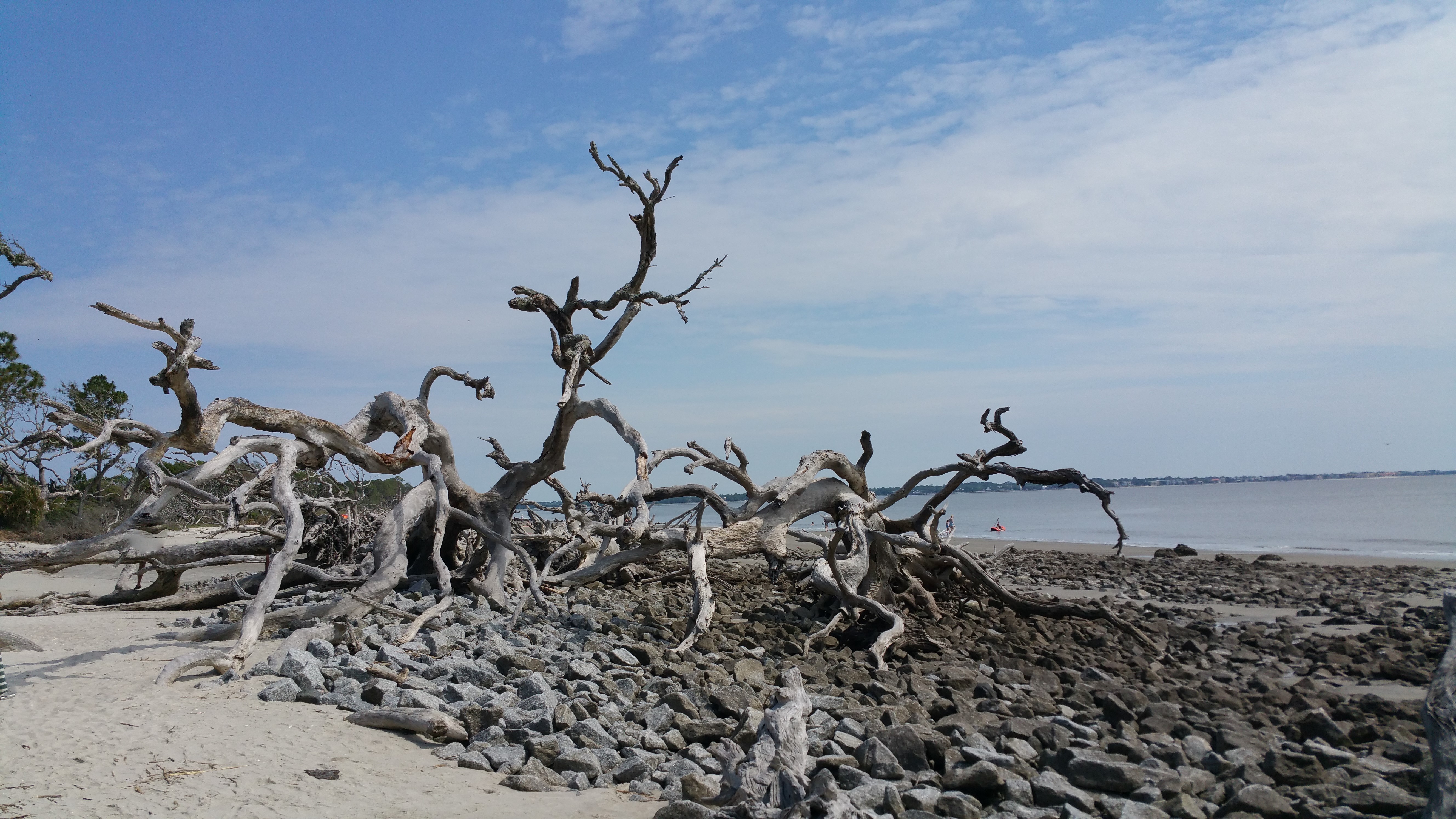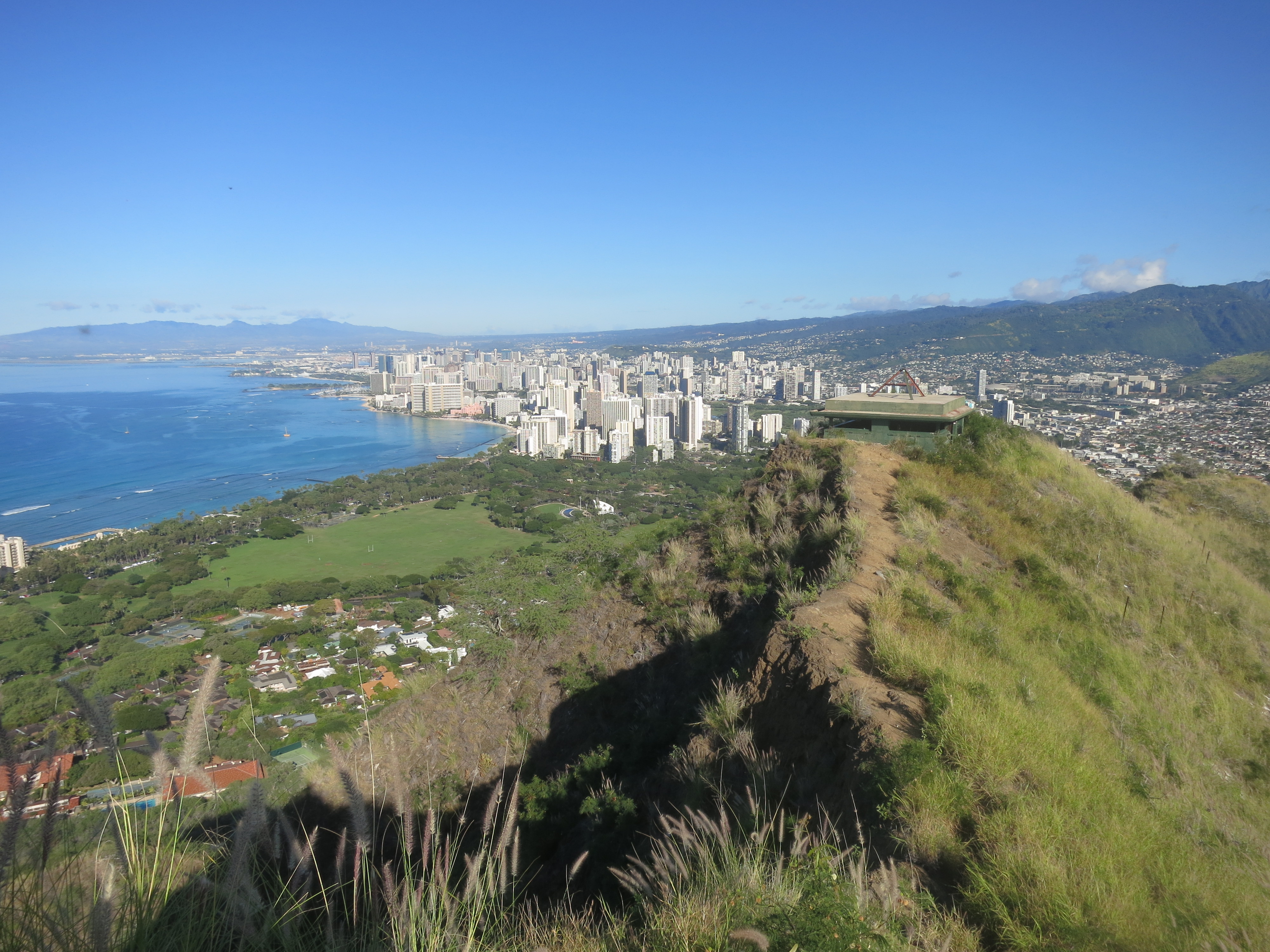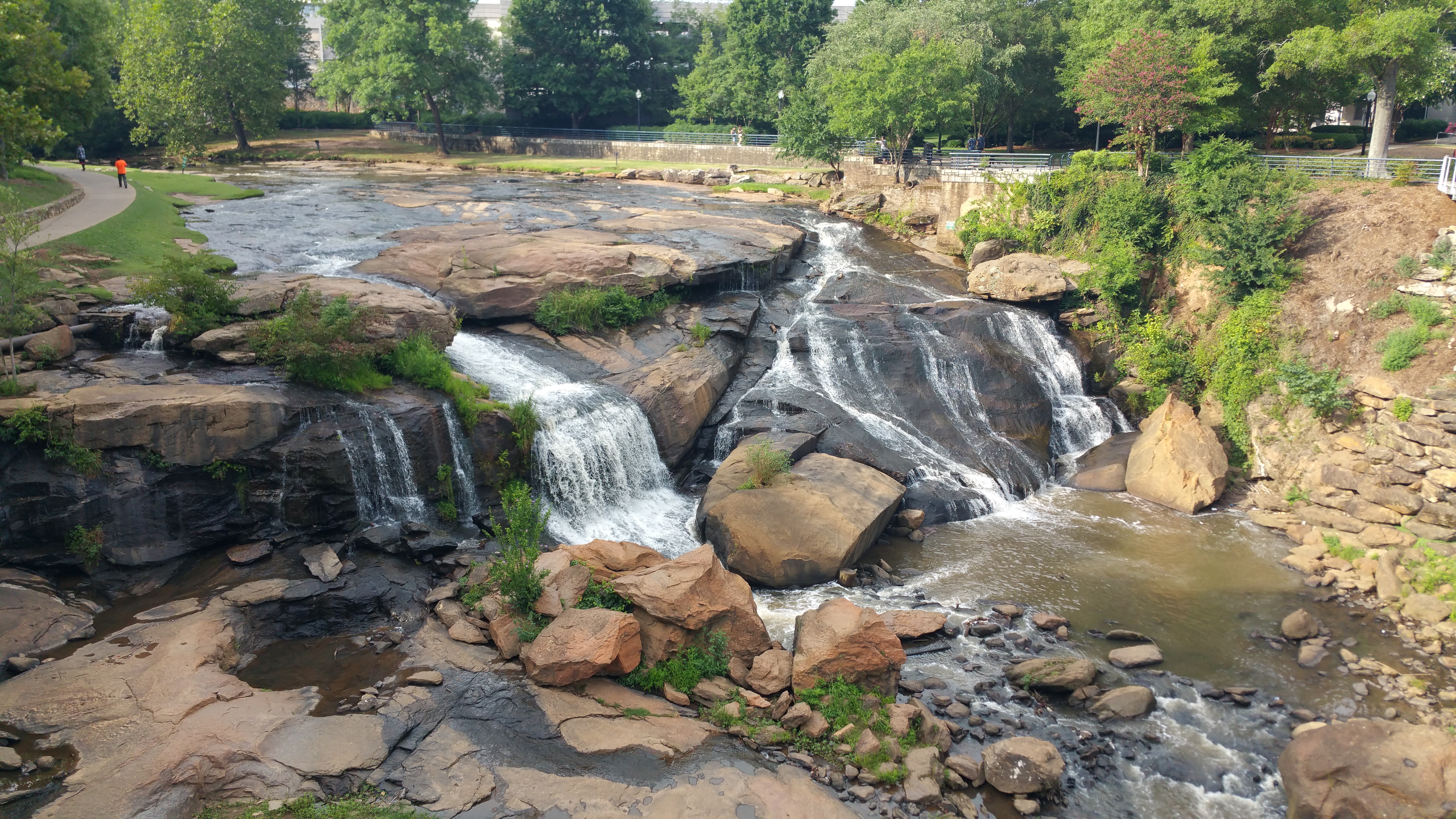
Kinzua Bridge- Mt Jewett, PA
Kinzua Bridge is an excellent example of both an early civil engineering marvel, and the awesome power of nature. Visually stunning, it’s definitely worth the detour to see in person.
Tucked away in rural Pennsylvania, the bridge was a Gilded Age marvel, built to carry coal across Kinzua Valley. Completed in 1882, the wrought iron bridge was billed the “Eighth Wonder of the World,” and attracted excursion trains full of tourists, eager to see the tallest railroad bridge in the world- a record it held until the Garbit Viaduct was constructed in 1884.

By the turn of the century, however, heavier trains already made the iron bridge obsolete. In May 1900, the old bridge was dismantled, and a new steel bridge was constructed in its place. Oddly, bolts from the first bridge were used to secure the new towers to the anchor blocks. Regular service continued over the bridge from 1900 until 1959, when the old bridge was bypassed, and sold for salvage.
However, the owner of the salvage company was reluctant to dismantle the bridge, given its engineering significance. Ultimately, the bridge and surrounding land was purchased by the State of Pennsylvania, and opened to the public in 1970. In 1977, the bridge was listed on the National Register of Historic Places.
In the late 80s, excursion trains once again rolled over the bridge, continuing until 2002, when it was deemed unsafe. Restoration of the bridge was underway in 2003, when a F1 tornado caused 11 of the bridge’s 20 towers to collapse. The bridge’s reused bolts were to blame for the failure.

Rather than rebuild the bridge, it was decide the remaining towers would be repaired, and the ruins kept intact. On September 15, 2011 a pedestrian walkway and observation deck opened atop the restored portion of the bridge, offering stunning views of both the valley and the fallen towers. Looking very much like a miniature model from above, the ruins remain a testament of the awesome power of nature, and it’s ability to destroy that which man creates.



You May Also Like

Driftwood Beach- Jekyll Island, GA
May 22, 2017
Diamond Head Summit Trail- Oahu, HI
January 4, 2018